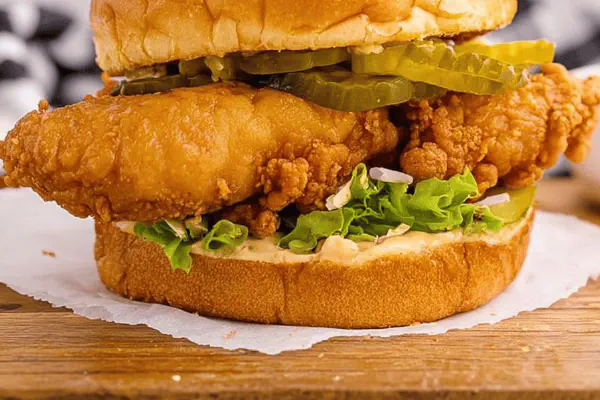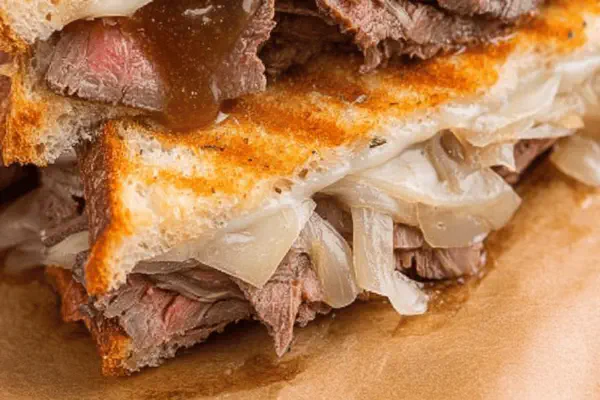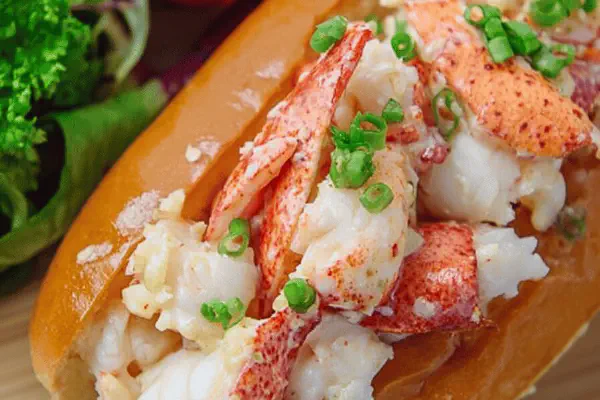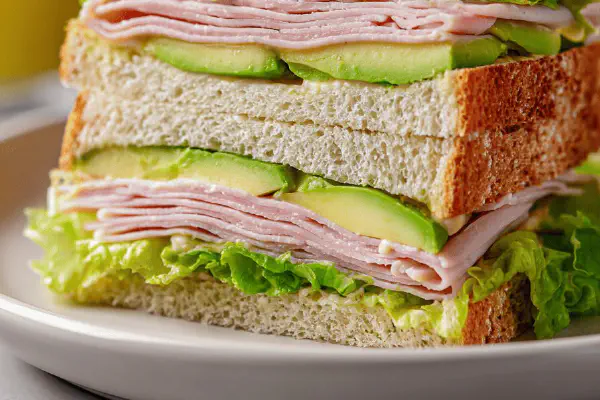Pesto Pine Nut Grilled Cheese
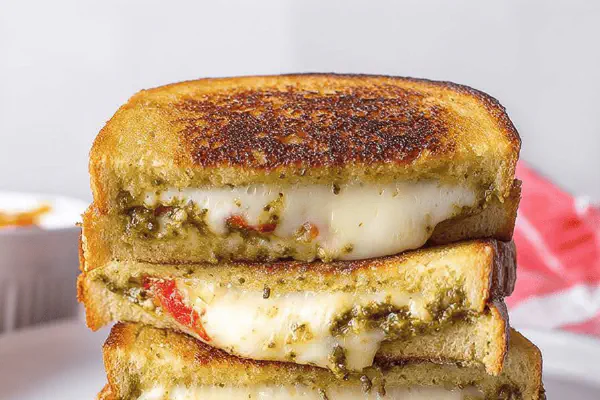
By Emma
Certified Culinary Professional
Ingredients
- 8 slices slightly thicker sourdough or Italian bread
- 3 tablespoons unsalted butter softened
- 16 slices Jarlsberg cheese or substitute with Gruyère for nuttier flavor
- ¼ cup jarred roasted red peppers drained and chopped
- 5 tablespoons fresh basil pesto homemade or store-bought works but homemade has sharper punch
- 3 tablespoons pine nuts toasted or swap for chopped walnuts if pine nuts unavailable or too pricey
About the ingredients
Method
- Butter one side of each bread slice using just under half the butter making sure edges are covered. Buttered sides face out for crisp golden crust.
- Evenly spread cheddar-garlic pesto or traditional basil pesto over unbuttered bread sides then layer 4 slices Jarlsberg cheese per sandwich. Scatter roasted red peppers and pine nuts over cheese for crunch and flavor contrast.
- Top each sandwich with remaining bread slices butter side out. Press gently to seal.
- Heat large skillet over medium to medium-low heat. Not high or burnt toast will form before cheese melts inside.
- Place one or two sandwiches flat in skillet, depending on pan size. Don’t crowd; cook in batches if needed.
- Use a spatula to press sandwiches firmly, listen for gentle crackle of butter heating and crust forming. Peek underneath after 3-4 minutes when edges turn golden-brown. Flip carefully, press again. Cook second side until equally golden and cheese bubbles visible at edges.
- Remove sandwiches from pan and let rest a minute to avoid cheese spilling out when cutting.
- Slice in half diagonally. Serve immediately while cheese silky and hot.
Cooking tips
Chef's notes
- 💡 Butter spread evenly edge to edge on bread side facing skillet. Not too thin or bread scorches. Not too thick or soggy edges eat crispness. Check edges as you cook; golden-brown signals readiness to flip. Butter soft, unsalted best for even melt under heat. Butter traps heat, creates crunchy crust layers if patient.
- 💡 Low to medium heat only here. High heat burns crust too fast; cheese stays cold and clumpy inside. Skip rush. Use thick sourdough slices going about ¾ inch so center heats through but bread won’t flop. Press spatula down softly on sandwiches. Sizzle and crackle sounds give clues. Listen close. If butter sound stops, heat too low or butter absorbed.
- 💡 Toast pine nuts separately in dry pan before adding. Move often to avoid burn spots. Nuts turn golden, smell toasty in 3-4 minutes. Adds aroma and crunch contrast. Swap walnuts or pecans if pine nuts pricey or missing. Rough chop nuts before toasting. Toasting nuts brings out oil, flavor punch not raw scent.
- 💡 Layer cheese directly on inside bread sides. Cheese touching bread melts faster, bonds bread and filling. Peppers and nuts last on top cheese layer to keep crunchy texture. Drain red peppers very well; extra moisture ruins grilled crisp crust. Swap peppers for sun-dried if needing chewier bite; drier, more leathery texture.
- 💡 Rest sandwiches after cooking at least a minute before slicing. Cheese needs time to settle; cut too soon and gooey melt leaks messily. Hold cut heat; cheese flow slows down. Use diagonal cut for easier bite size, shows cross-section melt and layers. Tent sandwiches loose with foil if cooking batches to keep warm without steam sogginess.
Common questions
Can I use other cheeses?
Sure. Gruyère works great for nuttier flavor; melts smooth. Cheddar less sweet, sharper bite. Mix if you want layered taste. Avoid very hard cheddars or crumbly types. Texture affects melt time.
What if my bread burns before cheese melts?
Lower heat. Slice thick enough ¾ inch-ish. Butter all outside well helps crust form slower. Patience wins here not speed. Try medium-low instead of medium; slow melt cheese then flip.
Any good substitutes for pine nuts?
Chopped walnuts or pecans toasted dry work well. Different crunch, less pricey. Almonds chopped thin also okay but more brittle. Toast nuts before use to unlock flavor and prevent raw taste in sandwich.
How to store leftovers?
Wrap cool sandwiches loosely in foil, fridge okay up to next day. Reheat in skillet low heat to keep crust crisp; microwave = soggy bread. Alternatively, toast fresh but expect slightly less gooey cheese melt but good for quick fix.
